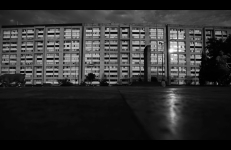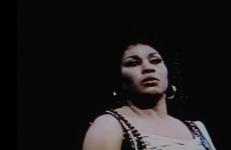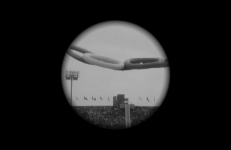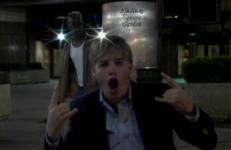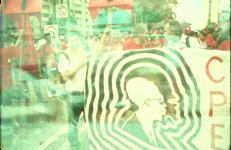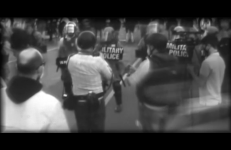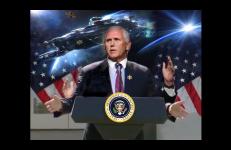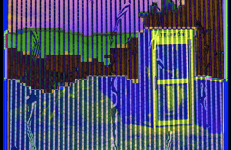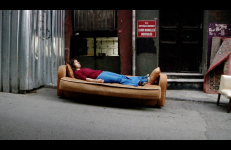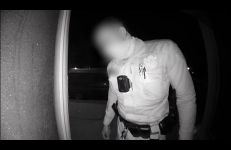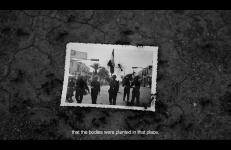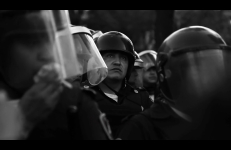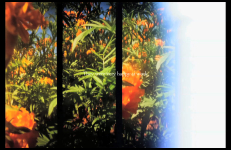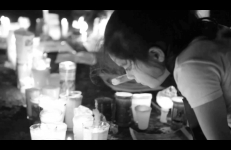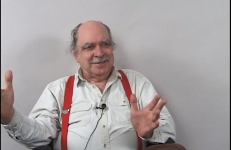A voice for which an event impossible to internalize remains distant. An event that in its distance does not cease to make the narration of something that should not take place anywhere foreign. The military massacre against unarmed students in 1968.
State, The
In 1985 the great soprano Leontyne Price sang the title role in Verdi’s Aida as her farewell opera. After the ‘O patria mia’ aria, the audience breaks into a four-minute applause. Oh My Homeland is the third in a series of minimal single shot 16mm films. It’s a film about representation, art, and material exchange. It’s a film about endings. It’s a film about identity, love, power, patriotism and the transcendent potential of art through the viewing of a face receiving adoration.
1968 was the opening of the Summer Olympics in Mexico City, ten days after the massacre of students and civilians by military and police on October 2 in the "Plaza de las Tres Culturas, Tlatelolco."
As recent state cut-backs force many mental patients out into the real world, Tony Oursler and Joe Gibbons team up to address psychiatric deinstitutionalization from a comic angle. After years of being cared for, Tony, Joe and their dog Woody leave the cuckoo’s nest and reluctantly face the prospect of finding jobs and cooking their own meals. Their darkly comic adventures include a comatose Tony tuning in to daytime TV, and Joe fantasizing about death while strolling in the park.
As recent state cut-backs force many mental patients out into the real world, Tony Oursler and Joe Gibbons team up to address psychiatric deinstitutionalization from a comic angle. After years of being cared for, Tony, Joe and their dog Woody leave the cuckoo’s nest and reluctantly face the prospect of finding jobs and cooking their own meals. Their darkly comic adventures include a comatose Tony tuning in to daytime TV, and Joe fantasizing about death while strolling in the park.
While out shooting for a different project altogether, I encountered two sleeping men on a Manhattan street. A short time later, I was standing in front of Pennsylvania Train Station with the camera on a tripod, when one of the men suddenly reappeared. He stepped in front of my camera and began to speak, about his path in the U.S. military, from Panama to Afghanistan to Iraq, about his life. I decided to limit the piece to what I shot in that area in those few hours, with one key addition: the text from a classic children's rhyme.
–Jem Cohen
A political composition on natural resistance. These images are an expiring breath in danger of extinction. These images become extinguished, consumed: a drop, a pure intensity which only appears when falling. In the presence of the image these audiovisual crowds become an affected body, assaulted by entropy. A face exhausted and reanimated by the continuous sound trance that traverses the battlefield. Faces for an eye that would not need to see.
Vice President Mike Pence eagerly plays cheerleader in chief for Donald Trump. In accepting the vice-presidential nomination in 2016, Pence proclaimed, “I'm a Christian, a conservative, and a Republican — in that order,” suggesting how we might understand his role. This ground-breaking, earth-shaking video begins with a pomp-ridden televised press conference, accompanied by uplifting music. Held early in 2017 at the White House Rose Garden, it showcased the president’s announced withdrawal from the historic Paris Climate Accord.
People enjoy my company connects the privatisation of telecommunications with techno-optimism, euphoria and online communication in the lead-up to the millennium.
The film explores the privatisation of the Irish state-owned telecommunications company Telecom Éireann from the viewpoint of shareholders communicating on early online forums. The event is contextualised within ideologies of technological emancipation in the pre-millennium period.
Tarlabaşı integrates performances of everyday movements and gestures as a direct response to the devastation caused by the centralized state sponsored urban renewal project in downtown Istanbul.
Dancer: Idil Kemer
Music: Cenk Ergün
Production: Yunus Demir
This Is A Studio uses surveillance footage that captures a late-night police visit. This document raises questions about home, belonging, and systems of power.
Radio reports analyze staged photographs we do not see, showing the victims of a mass murder committed by Mexican soldiers. The politicization of the film accounts for the duality between framing and mis-framing, and also shows the overflowing character of a process of transit.
A brief dialogue between Marianne Renoir and Pierrot and a short description-reading from ‘Pierrot le fou’ about Diego Velázquez – these intersect with a visual moment to constitute the outline of a perception and the occurrence of the idea of ‘el pueblo,’ of a meeting.
The film suggests a link between three political figures from the history of Mexican resistance: the Soldadera (woman guerrilla fighter), the Zapatista (member of the Zapatista Army of National Liberation), and the Normalista (students from the Ayotzinapa Normal School).
An elegy to the popular demands against ominous social and political events in the recent Mexico.
In this interview, communications theorist, Gene Youngblood (b. 1942) maps out the various stages of the development of video technology and its philosophical implications for human interaction. The range of topics discussed moves beyond video to offer an extensive and rich survey of American culture from the 1960s to the present moment. In addition to discussing his canonical text, Expanded Cinema, Youngblood shares stories from his early days as a police reporter for the Los Angeles Herald Examiner, where he gained intimate knowledge of the media’s politics of representation. With the acuity of hindsight, Youngblood discusses important self-discoveries, and his life-changing decision to move from the mainstream media into the world of the underground press.




